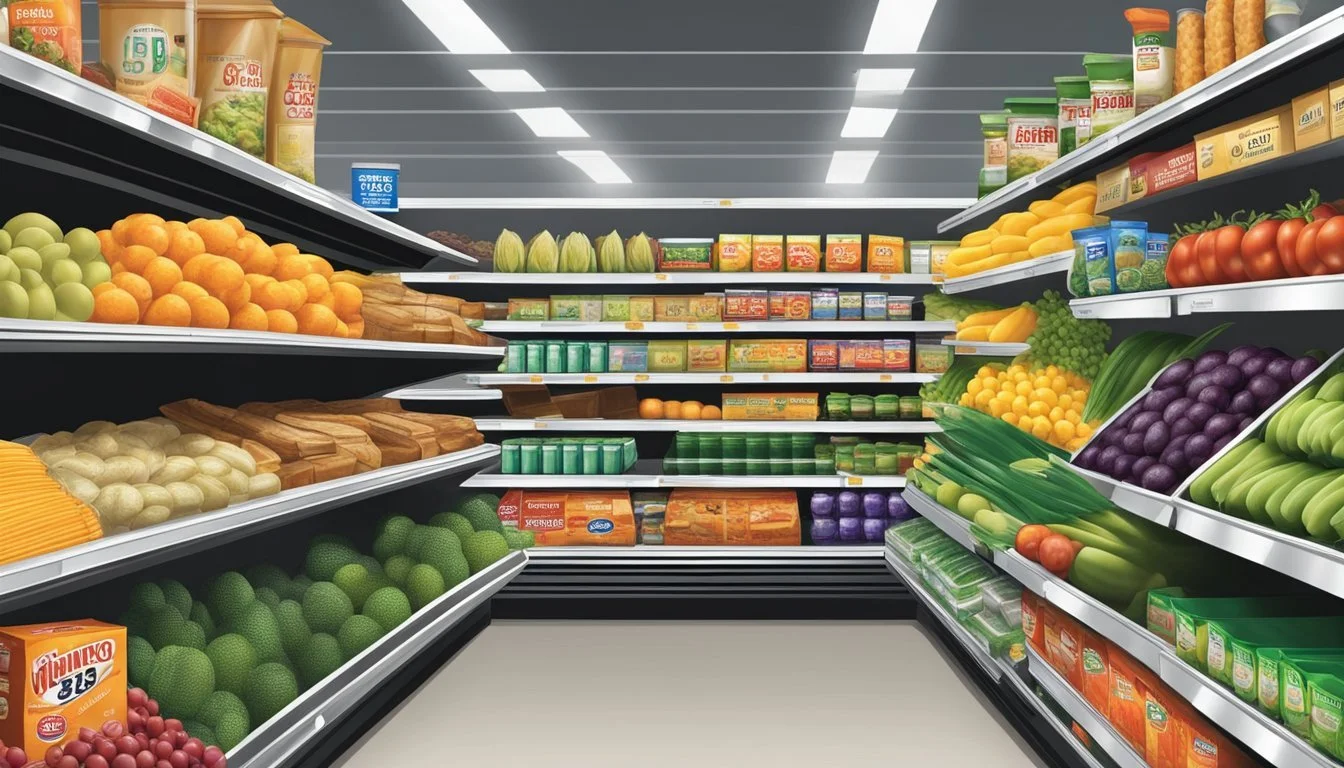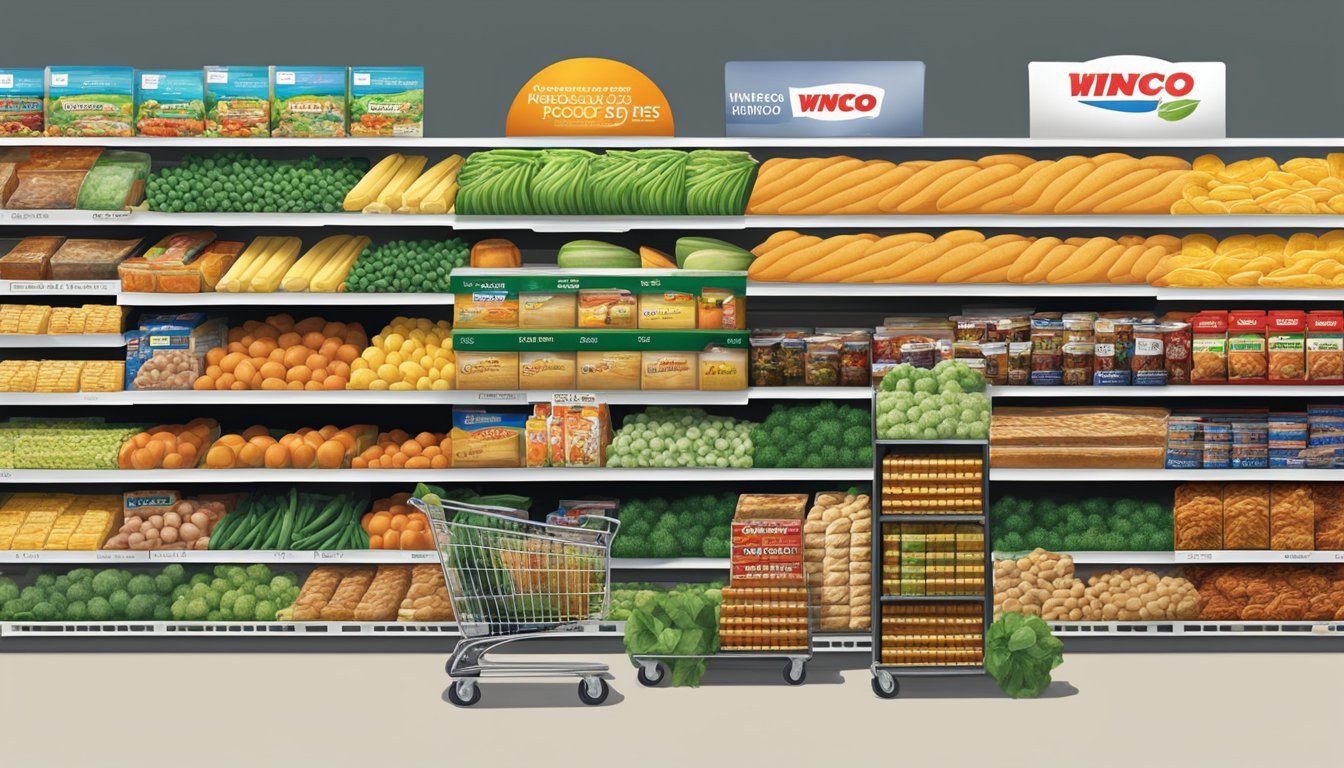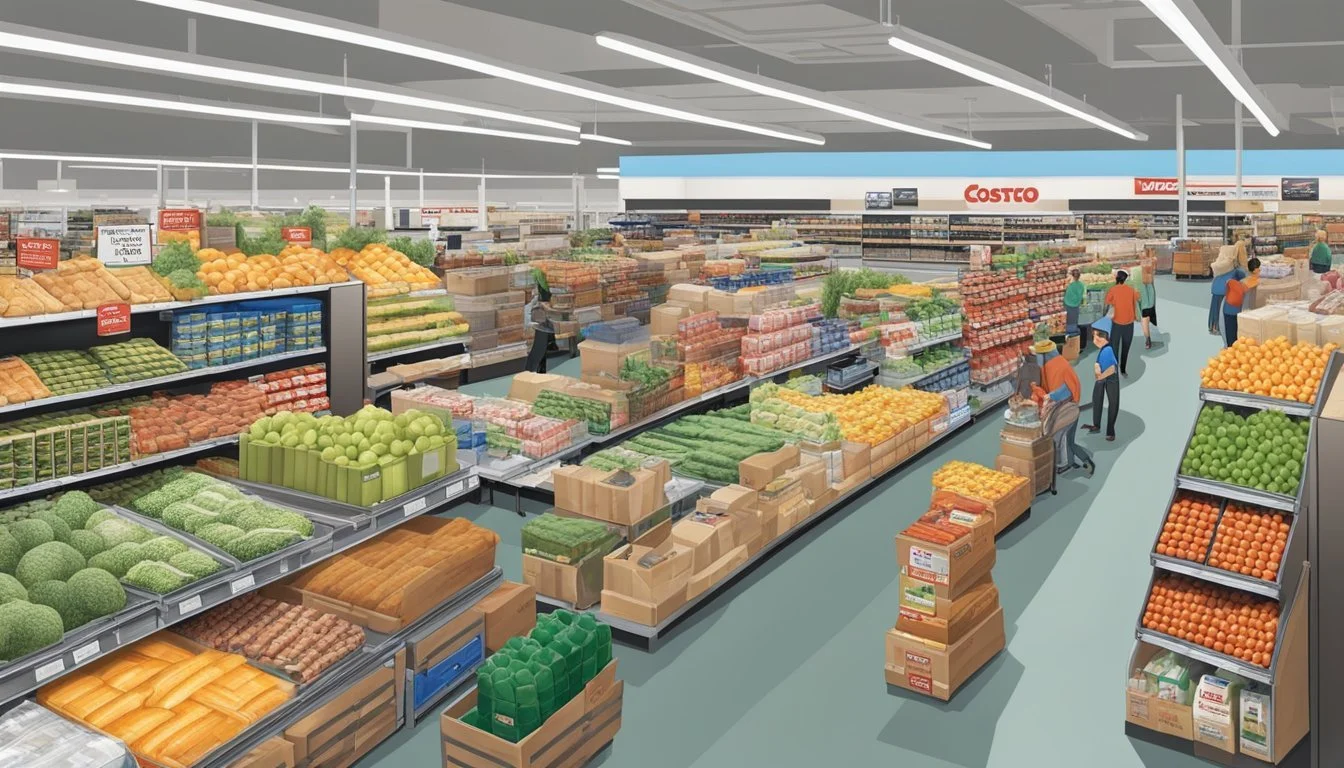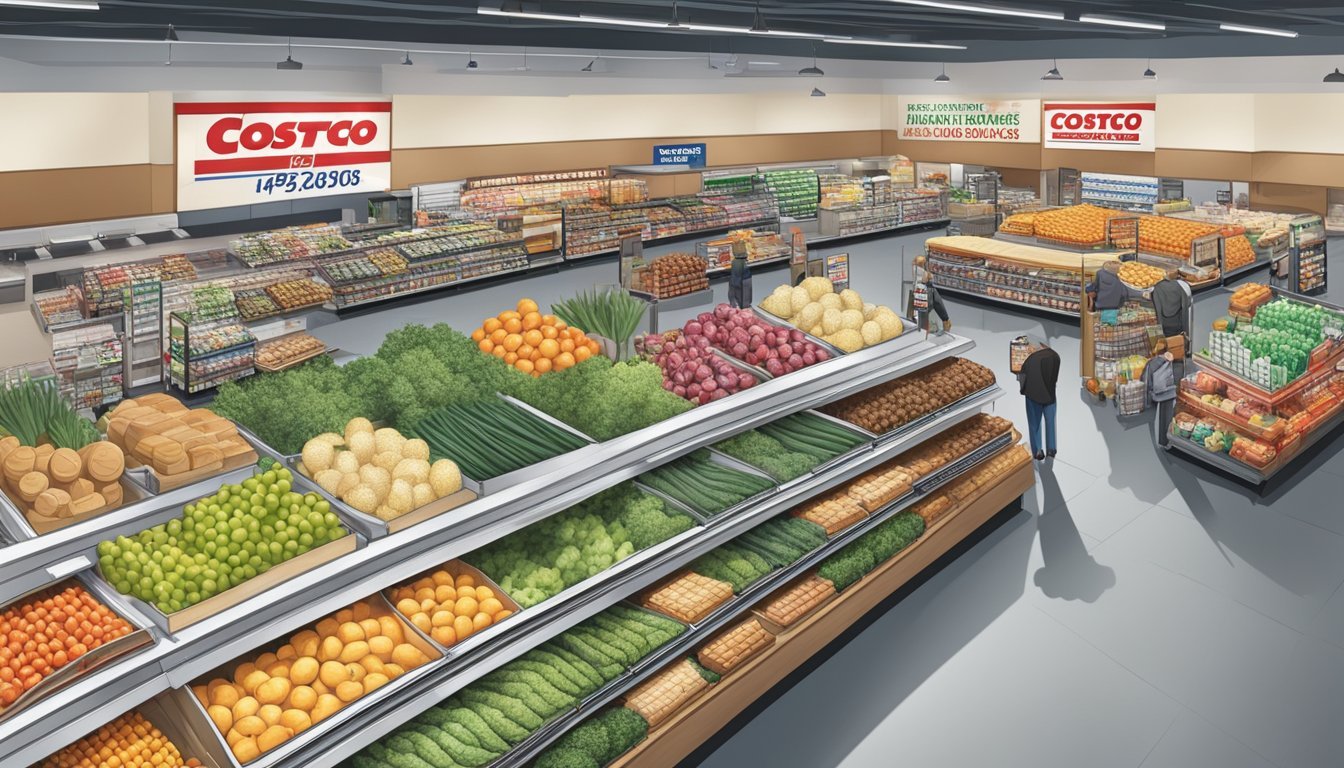Is Costco Cheaper Than WinCo Foods?
A Price Comparison of Warehouse Giants
Costco and WinCo Foods are both popular destinations for budget-conscious shoppers seeking quality groceries at affordable prices. While Costco is known for its bulk offerings and member-exclusive deals, WinCo Foods has gained a reputation as a no-frills supermarket with competitive pricing.
WinCo Foods generally offers slightly lower prices per unit compared to Costco, making it the more cost-effective option for many grocery items. This employee-owned discount chain operates over 130 stores across 10 states, focusing primarily on grocery products, health and beauty items, and household essentials.
Despite WinCo's edge in grocery pricing, Costco provides additional value through its wider range of services and non-grocery merchandise. Customers must weigh factors such as membership fees, product selection, and shopping convenience when deciding between these two retailers. Both stores offer significant savings potential compared to traditional supermarkets, with some estimates suggesting families could save thousands of dollars annually by shopping at either WinCo or Costco.
Costco and WinCo Foods Overview
Costco and WinCo Foods offer distinct shopping experiences and business models. Both focus on providing value to customers, but their approaches differ in key ways.
Costco's Business Model
Costco operates as a membership-based warehouse club. Customers pay an annual fee to access its stores and exclusive deals. The company emphasizes bulk purchasing, allowing shoppers to buy large quantities at lower per-unit prices.
Costco stocks a wide range of products beyond groceries, including electronics, clothing, and home goods. Its stores feature a no-frills warehouse layout. The company relies on high sales volume and low markup to maintain competitive pricing.
Costco is known for treating employees well, offering higher wages and benefits compared to many retailers. This strategy aims to reduce turnover and improve customer service.
WinCo Foods' Business Model
WinCo Foods is an employee-owned discount supermarket chain primarily located in the western U.S. The company does not charge a membership fee, making it accessible to all shoppers.
WinCo keeps costs low through various strategies. Customers bag their own groceries, reducing labor expenses. The stores have a basic, warehouse-style layout similar to Costco.
WinCo offers a wide selection of products, with a focus on groceries and household items. The company is known for its extensive bulk food section, where customers can purchase exactly the amount they need.
As an employee-owned business, WinCo can make decisions that prioritize long-term stability over short-term profits. This structure contributes to its ability to maintain competitive prices.
Price Comparison by Product Categories
Costco and WinCo Foods offer competitive pricing across various product categories. Their pricing strategies differ based on factors like bulk quantities, store brands, and seasonal availability.
Bulk Items and Pantry Staples
Costco excels in bulk pricing for pantry staples. Large quantities of rice, pasta, and beans are often cheaper per unit at Costco. A 25-pound bag of long-grain rice at Costco typically costs less per pound than WinCo's smaller packages.
WinCo, however, provides more flexibility with smaller quantities. Their bulk bins allow customers to purchase exact amounts needed. This can be advantageous for items like spices or specialty grains.
For everyday staples like cereal and oats, WinCo often edges out Costco in price. A gallon of milk is generally cheaper at WinCo, while Costco may offer better deals on large quantities of coffee.
Fresh Produce and Meats
WinCo frequently offers lower prices on fresh produce. Their rotating selection of fruits and vegetables is competitively priced, often beating Costco's per-pound costs.
Meat prices can vary. Costco's large packs of chicken breasts are often cheaper per pound. However, WinCo's smaller portions may be more practical for some households.
Product Costco WinCo Apples (per lb) $1.49 $0.99 Chicken Breast (per lb) $2.99 $3.29
Seasonal produce deals can significantly impact prices at both stores. WinCo's local sourcing sometimes results in better prices for in-season items.
Household and Health Products
Costco often provides better value for household items bought in bulk. Large packs of toilet paper, cleaning supplies, and toiletries are generally cheaper per unit at Costco.
WinCo competes well on smaller quantities of these items. Their store-brand options for cleaning products and personal care items are often priced lower than national brands at Costco.
For health products, Costco's pharmacy services and bulk vitamins can offer savings. WinCo's selection is more limited but may have lower prices on common over-the-counter medications.
Butter and other dairy products are typically cheaper at WinCo. However, Costco's bulk packaging can provide savings for larger households or those who freeze extra portions.
Membership and Additional Costs
Costco and WinCo Foods differ significantly in their membership requirements and payment options, impacting overall shopping costs.
Membership Fees
Costco requires a paid membership for shopping access. The basic Gold Star membership costs $60 annually, while the Executive membership is $120 per year. Executive members receive additional benefits, including a 2% reward on qualified Costco purchases.
WinCo Foods does not charge membership fees. Any customer can shop at WinCo without paying an entry cost.
This difference in membership structure can affect the total cost of shopping, especially for infrequent shoppers.
Payment Options and Transaction Fees
Costco accepts Visa credit cards, debit cards, cash, checks, and EBT. They do not accept other credit cards like Mastercard or American Express in-store.
WinCo Foods accepts debit cards, cash, checks, and EBT. They do not accept credit cards of any kind.
WinCo's no-credit-card policy helps keep prices low by avoiding transaction fees. However, this can be inconvenient for shoppers who prefer credit cards.
Costco's limited credit card acceptance may also inconvenience some customers, but their partnership with Visa allows them to offer additional rewards to cardholders.
Convenience and Shopping Experience
Costco and WinCo Foods offer distinct shopping experiences that cater to different customer needs. Their approaches to store locations, hours, service, and overall shopping environment vary significantly.
Store Locations and Hours
Costco operates over 800 warehouses worldwide, with locations primarily in suburban areas. Most Costco stores are open from 10 AM to 8:30 PM on weekdays, with slightly reduced hours on weekends. They are typically closed on major holidays.
WinCo Foods has a more limited presence, with around 130 stores concentrated in the western United States. WinCo stores are often open 24 hours a day, 7 days a week, providing greater flexibility for shoppers with non-traditional schedules.
Service and Store Brands
Costco is known for its excellent customer service and generous return policy. The company offers a wide range of Kirkland Signature products, its well-regarded store brand. These items are often comparable in quality to name-brand alternatives but at lower prices.
WinCo focuses on a no-frills approach to keep costs down. The company offers fewer services but maintains competitive pricing on its store-brand items. WinCo's bulk bins allow customers to purchase exactly the amount they need of various products.
Shopping Environment
Costco's warehouse-style stores feature wide aisles and bulk quantities. The shopping experience includes free samples and a variety of non-grocery items like electronics and clothing. Membership is required to shop at Costco.
WinCo stores have a more traditional grocery store layout. They offer a wider variety of individual products compared to Costco. WinCo's basic store setups and self-bagging policies contribute to its ability to maintain low prices. No membership is required to shop at WinCo.
Discounts, Special Deals, and Rewards
Both Costco and WinCo Foods offer ways for customers to save money. Each store has unique strategies to provide value through discounts, promotions, and rewards programs.
Coupons and In-Store Promotions
Costco features monthly coupon books with significant savings on select items. These coupons often provide $2-$5 off popular products or perishables. Costco also runs periodic sales events like their "Hot Buys" with deeper discounts.
WinCo Foods takes a different approach. They don't accept manufacturer coupons but compensate with consistently low prices. WinCo does offer in-store specials and markdowns on soon-to-expire items.
Both stores use end-cap displays to highlight deals. Costco's "Instant Savings" signs indicate limited-time price reductions. WinCo uses bright yellow tags to mark temporary price cuts.
Rewards Programs
Costco's Executive Membership offers 2% cash back on eligible purchases, up to $1,000 per year. This reward applies to most items, including groceries, electronics, and travel bookings.
The Costco Anywhere Visa Card provides additional cash back:
4% on gas (up to $7,000 per year)
3% on restaurants and travel
2% on Costco purchases
1% on everything else
WinCo Foods doesn't have a formal rewards program. Their employee-owned structure allows them to keep prices low without needing a points system. WinCo focuses on everyday low pricing rather than a rewards structure.
Product Quality and Selection
Costco and WinCo Foods offer different approaches to product quality and selection. Both stores provide a range of grocery products, health and beauty items, and household goods, but their strategies for stocking shelves differ significantly.
Brand vs. Store Brands
Costco focuses on offering a curated selection of name-brand products alongside its popular Kirkland Signature private label. This approach provides customers with recognizable brands and high-quality store-brand alternatives. Kirkland Signature items often match or exceed the quality of national brands at lower prices.
WinCo Foods carries a broader variety of brands, including national names and regional favorites. They also offer their own store brands, which tend to be more budget-friendly. WinCo's larger selection allows customers to choose from multiple options within each product category.
Quality of Goods
Costco is known for its stringent quality control measures. The company carefully selects products to ensure they meet high standards. This commitment to quality extends to their fresh produce, meats, and bakery items.
WinCo Foods prioritizes affordability but still maintains acceptable quality standards. Their produce section often features locally sourced items when available. While the overall quality may not match Costco's premium offerings, WinCo provides good value for budget-conscious shoppers.
Both stores offer quality grocery products, but Costco generally edges out WinCo in terms of consistently high-quality goods across all departments.
Additional Services and Products
Costco and WinCo differ significantly in their offerings beyond basic groceries. Costco provides a wider range of non-grocery items and services, while WinCo focuses primarily on food and household essentials.
Non-Grocery Items
Costco excels in offering a diverse selection of non-grocery products. Members can purchase tires, electronics, appliances, and clothing at competitive prices. The warehouse club often stocks high-quality brands and exclusive Kirkland Signature items.
WinCo, in contrast, maintains a more limited non-grocery inventory. Their focus remains on food and household basics, with fewer options for large appliances or electronics.
Costco's appliance selection includes refrigerators, washers, and dryers from reputable brands. Their clothing department features both designer labels and affordable basics for all ages.
Gas Stations and Curbside Pickup
Costco operates gas stations at many locations, offering fuel at prices typically lower than nearby competitors. Members can conveniently fill up their tanks while shopping for groceries.
WinCo does not provide gas stations, concentrating solely on in-store offerings.
Curbside pickup has become increasingly popular. Costco has implemented this service at select locations, allowing members to order online and collect their purchases without entering the store.
WinCo has been slower to adopt curbside pickup, with limited availability across their store network. Their focus remains on providing low prices through in-store shopping experiences.
Consumer Perspective and Market Trends
Price-conscious shoppers compare Costco and WinCo to find the best deals. Customer ratings and shopping patterns reveal key differences between these popular grocery chains.
Customer Ratings and Surveys
Costco consistently earns high marks for customer satisfaction. In recent surveys, 91% of Costco shoppers cited value for money as their primary reason for choosing the warehouse club. WinCo also performs well in customer ratings, with many praising its low prices and no-frills approach.
Consumer Reports ranks Costco among the top grocery retailers nationwide. WinCo receives positive feedback for its bulk bin options and affordable store-brand items. Both stores appeal to budget-minded shoppers, but Costco's broader selection of non-grocery items gives it an edge for some customers.
Shopping Patterns and Demographics
Families and bulk buyers tend to gravitate towards Costco for its large package sizes and variety of household goods. The annual membership fee attracts committed shoppers who visit frequently to maximize savings.
WinCo appeals to a diverse customer base, including budget-conscious individuals and families. Its 24-hour stores in many locations cater to shift workers and night owls. WinCo's lack of credit card acceptance shapes its clientele, attracting shoppers comfortable with cash, debit, or EBT payments.
Both stores see higher traffic on weekends and at the beginning of the month when many customers receive paychecks. Savvy shoppers often split their purchases between the two stores to optimize savings on different product categories.
Comparing Costs for Families and Individuals
Grocery bills can vary significantly between Costco and WinCo Foods. Both stores offer competitive pricing, but key differences impact overall costs for shoppers.
Average Grocery Bill Analysis
For a family of four, the average monthly grocery bill at Costco ranges from $600 to $800. WinCo Foods typically comes in slightly lower, with monthly bills between $550 and $750 for the same family size.
Individual shoppers see similar trends. A single person's monthly grocery expenses at Costco average $200 to $300, while WinCo shoppers spend approximately $180 to $280.
WinCo's edge in pricing stems from its no-frills approach and focus on groceries. The store offers a wider variety of products at slightly lower per-unit costs compared to Costco.
Costco's bulk packaging can lead to savings for larger families who can use the quantities before expiration. However, this may result in waste for smaller households or individuals.
WinCo's lack of membership fees provides an immediate cost advantage. Costco's annual membership fee must be factored into overall savings calculations.
Both stores excel in providing low grocery prices, but WinCo generally edges out Costco in direct cost comparisons for most shoppers.
Financial and Environmental Sustainability
Costco and WinCo employ different strategies to balance cost savings with environmental impact. Their approaches affect pricing, product selection, and sustainability practices.
Cost Savings and Environmental Impact
Costco focuses on bulk purchases to reduce packaging waste and transportation costs. This model allows them to offer competitive prices on household items and pet supplies. WinCo, in contrast, emphasizes local sourcing when possible, potentially reducing transportation emissions.
Both retailers work to minimize food waste. Costco's larger package sizes may lead to less frequent shopping trips, reducing customer travel emissions. WinCo's employee-owned structure enables them to keep prices low while investing in energy-efficient store designs.
Costco has made public commitments to reduce its carbon footprint in its operations and supply chain. WinCo's sustainability efforts are less publicized but include initiatives like reusable bag programs and energy-efficient lighting in stores.
Neither company has a clear overall advantage in combining financial and environmental sustainability. The choice between them may depend on individual shopping habits and priorities.
Regional Availability and Accessibility
Costco and WinCo Foods have different geographic footprints across the United States. Their store locations impact consumer access and pricing in various regions.
State-by-State Availability
Costco operates in 45 states and Puerto Rico, with a strong presence on both coasts. WinCo Foods, as a discount supermarket chain, has a more limited reach, serving customers in 10 states primarily in the western and southwestern U.S.
California, Oregon, and Washington have both Costco and WinCo stores, offering consumers choice. In these states, shoppers can compare prices between the two retailers directly.
WinCo's expansion has been slower than Costco's, focusing on strategic growth in select markets. This approach allows WinCo to maintain its low-cost model and employee ownership structure.
Costco's wider availability means more Americans have access to its bulk pricing model. However, in areas where both stores operate, WinCo often undercuts Costco's prices on groceries.
Other regional chains like Grocery Outlet, Lucky, and Market Basket compete in specific markets, further influencing local pricing dynamics.









